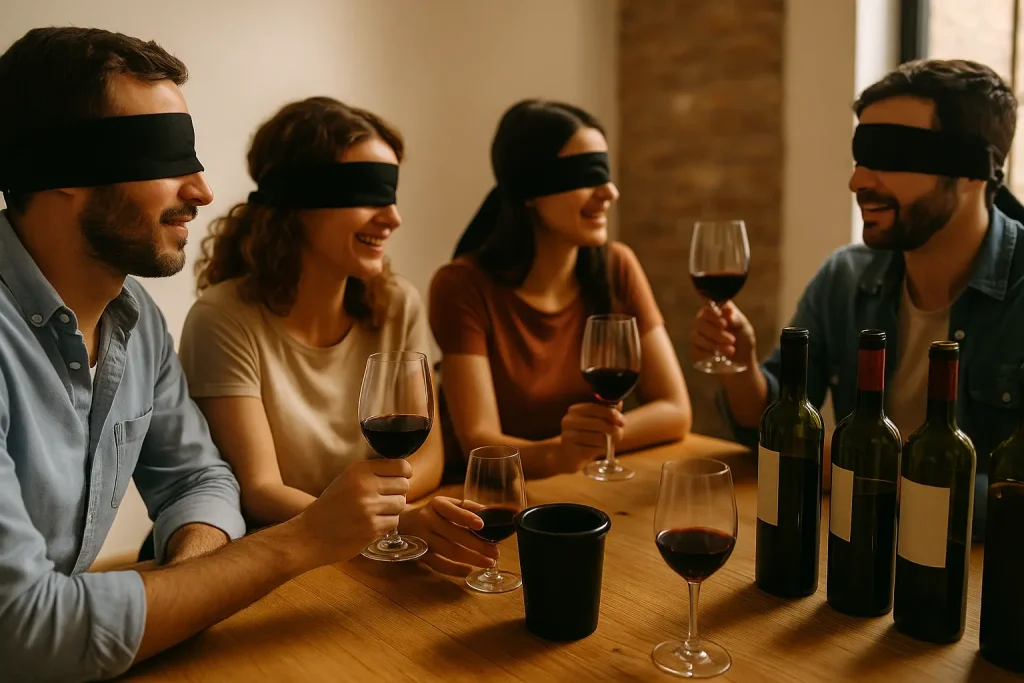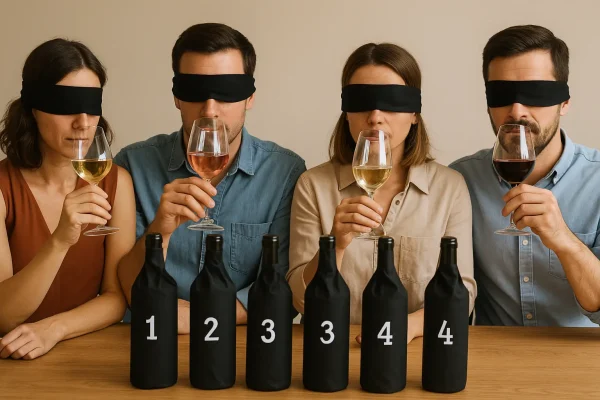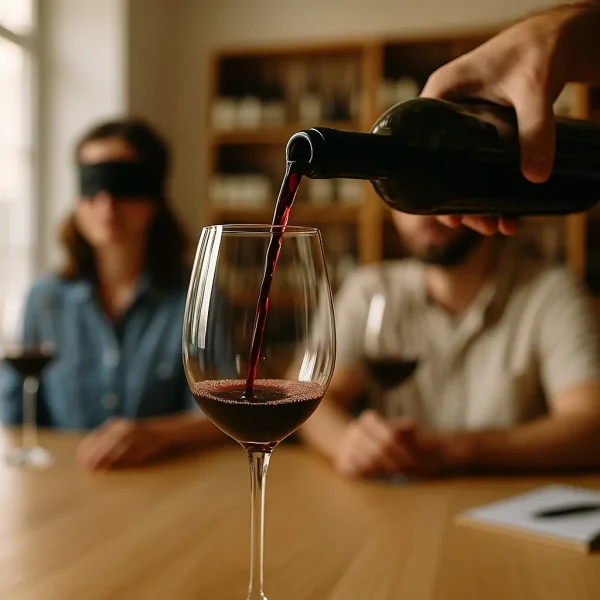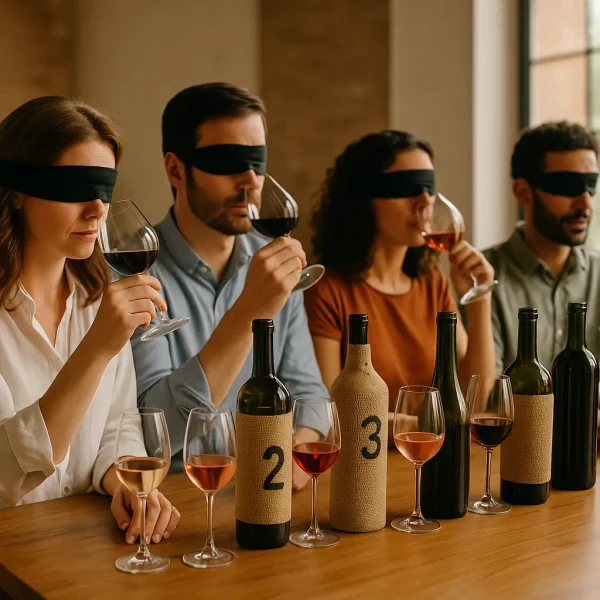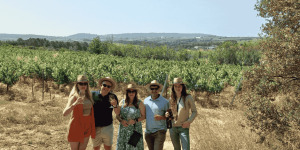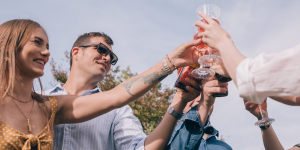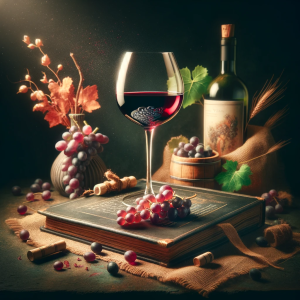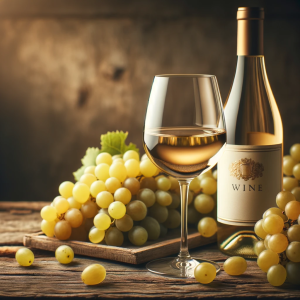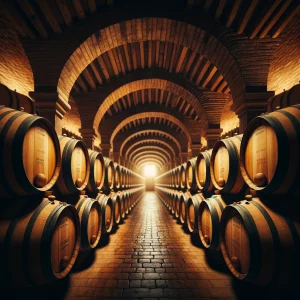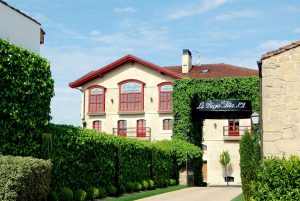This summer, play with your senses and discover wine in a new way
Can you imagine finding out that your favorite wine is exactly the one you always avoid at the shop? Or that the rosé you tend to dismiss becomes your number one choice?
Blind wine tastings are much more than a fun activity: they’re a transformative experience that reconnects you with your senses in a completely new way. This summer, skip the typical toast and dare to host a tasting experience your guests will remember forever.
What exactly is a blind wine tasting?
A blind tasting is a session where participants try wines without knowing their identity. No labels, no biases, no preconceived ideas. Just you, your senses, and the wine.
The goal isn’t to become a sommelier overnight or guess impossible brands. It’s about exploring wine in its purest form, paying attention to aspects we often overlook: color intensity, aromatic nuances, mouthfeel, and the emotions each sip awakens.
It’s fascinating to see how, without label or price conditioning, our perceptions can change dramatically.
The unique benefits of blind tastings
Break biases and free your senses
Without knowing origin or price, your palate becomes the only judge. You may discover that an affordable wine surprises you more than a premium one, or that a variety you “didn’t like” turns out to be delicious.
Perfect for any occasion
Family gatherings: Get everyone involved—from the uncle who “only drinks red” to the cousin who “doesn’t know about wine.”
Dinners with friends: Turn an ordinary evening into a memorable experience.
Corporate events: A wine-driven team-building activity that sparks natural conversations and connection among colleagues.
Special celebrations: Add an original touch to birthdays, parties, or farewells.
Learning without pressure
At traditional tastings, many people feel intimidated for not “knowing enough.” In a blind tasting, everyone starts from the same place: no one knows the wine in their glass. This creates a more relaxed, fun, and participatory atmosphere.
How to host a blind wine tasting: step-by-step guide
1. Strategic wine selection: the key to success
The sweet spot is 4 to 6 wines to offer a complete experience without overwhelming the palate.
Theme ideas:
By color: 2 whites, 2 rosés, and 2 reds to explore the full spectrum.
By region: Compare a Penedès with a Rioja, a Priorat with a Bierzo.
By variety: Tempranillo vs. Garnacha (Grenache) vs. Monastrell (Mourvèdre) to grasp varietal differences.
By price: Mix €8 bottles with €25 bottles and watch the reactions.
By style: Young vs. Crianza vs. Reserva.
Always include a surprise wine: perhaps a sparkling among reds, a naturally sweet wine, or a bottle from an unexpected region. These moments tend to spark the most fun, spontaneous conversations.
Ideal serving temperature:
Whites & rosés: 6–8 °C
Young reds: 14–16 °C
Aged reds: 16–18 °C
2. Professionally hiding the information
Materials you’ll need:
Opaque black bottle sleeves (easy to find in specialty shops).
Heavy-duty aluminum foil as a DIY alternative.
Dark fabric bags.
Water-resistant numbered labels.
Hiding technique:
Remove the top capsule completely to eliminate clues about the winery.
Cover the entire bottle, including the neck, where revealing details sometimes appear.
Clearly number each bottle (1, 2, 3…) and keep a secret key with their real identities.
💡 Pro tip: save the original labels to show during the final reveal. The visual impact is far greater—and more surprising.
3. Technical prep of the glassware
Use uniform glasses for all wines. Universal red wine glasses work well for most styles.
Service protocol:
Pour 50–75 ml per glass (about ¼ full).
Discreetly mark each glass with the matching bottle number.
Serve wines in order of increasing intensity: whites → rosés → light reds → fuller-bodied reds.
Have spare glasses and water ready to cleanse the palate.
Palate cleansers: offer neutral water, unsalted white bread, and plain crackers between wines.
4. Structured tasting guide for beginners
Give each participant a tasting sheet with these sections:
(the text can continue with the next part of the guide if you’d like me to translate it as well)
4. Structured tasting guide for beginners
Provide each participant with a tasting sheet including:
Visual phase (30 seconds):
Color and intensity
Clarity or cloudiness
Presence of bubbles (if any)
Nose (1–2 minutes):
First aromatic impression
Intensity (light, medium, pronounced)
Aroma families: fruit, flowers, spice, mineral, oak…
Palate (1–2 minutes):
Entry (sweet, dry, acidic)
Body (light, medium, full)
Tannins (reds only): soft, present, firm
Finish: short, medium, long
Overall impression:
Personal score from 1 to 10
Would you buy it?
What would you pair it with?
5. Atmosphere and sensory experience
Lighting: natural or white light to assess colors accurately. Avoid yellow or colored lights, which can alter visual perception.
Music: a soft soundscape that fosters conversation without distraction. Gentle jazz, classical, or instrumental music works beautifully.
Room temperature: 18–20 °C is ideal so aromas aren’t muted.
Pairing without interference:
White bread or neutral crackers.
Unsalted nuts (almonds, walnuts).
Mild cheeses (young Manchego, fresh goat cheese).
Avoid: cured meats, olives, chocolate, or heavily seasoned foods, as they can distort aromas and flavors.
Themed décor: neutral tablecloths, elegant napkins, and wine-related elements—like vintage corkscrews or small decorative barrels—add warmth and coherence to the experience.
6. The big moment: reveal and discussion
Ideal timing: plan about 8–10 minutes per wine during the tasting and 30–45 minutes at the end for the full reveal.
Reveal method:
Wine by wine: reveal each bottle one by one, not all at once.
Guesses first: invite each participant to share what they think it is before revealing it.
Gradual surprises: start with the basics (color, region) and add details (winery, vintage, price).
Open debate: let participants express their surprises and shifts in opinion.
Key moments that always spark emotion:
When someone discovers their favorite wine was the most affordable one.
Shifts in opinion about regions or varieties they “didn’t like.”
Agreements and disagreements that ignite passionate conversation.
Want a professional, hassle-free experience?
At Taca de Vi, we design tailor-made blind wine tastings that turn any occasion into a memorable event. Our team of sommeliers handles everything so all you need to do is enjoy:
✅ Wine selection adapted to your group and budget.
✅ A professional host who guides the experience with warmth and dynamism.
✅ Full logistics: glassware, tasting sheets, and concealment materials.
✅ Atmosphere set-up tailored to your space.
✅ Total flexibility: at home, in the office, in the garden, on the terrace, or among the vines.
Available experiences
We create made-to-measure experiences, but if you prefer, we can suggest some of our most requested tasting formats:
Family tastings: groups of 6 to 12 people, relaxed and easy-going vibe.
Corporate events: wine tastings for companies as a fresh, dynamic team-building idea.
Special celebrations: birthdays, anniversaries, farewells, or friends’ reunions.
Themed tastings: by region, variety, style, or price.
This summer, dare to discover wine in a completely new way
A blind wine tasting isn’t just an activity—it’s an experience that shifts perspectives, sparks real conversation, and creates lasting memories.
Can you picture your guests’ faces when they realize their favorite wine is the one they never would have picked? Or when they notice their biases about certain regions or prices didn’t hold up?
Ready to host your own blind tasting? Whether you want to run it yourself using our guide or prefer that we take care of everything, get in touch to clear up any questions or plan the perfect experience.
This summer, close your eyes and let your senses guide you to new discoveries.
Cheers to the surprises ahead! 🍷
